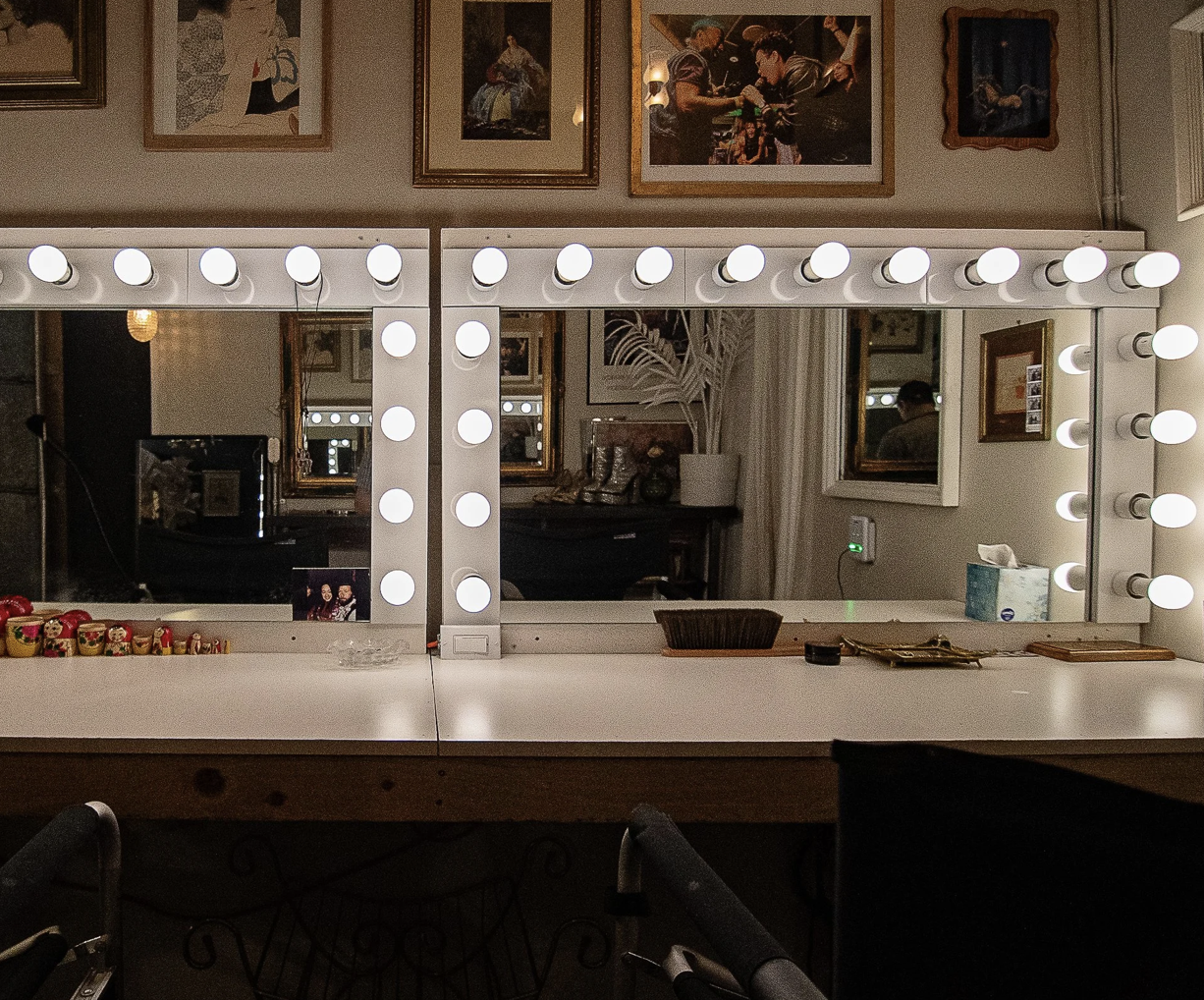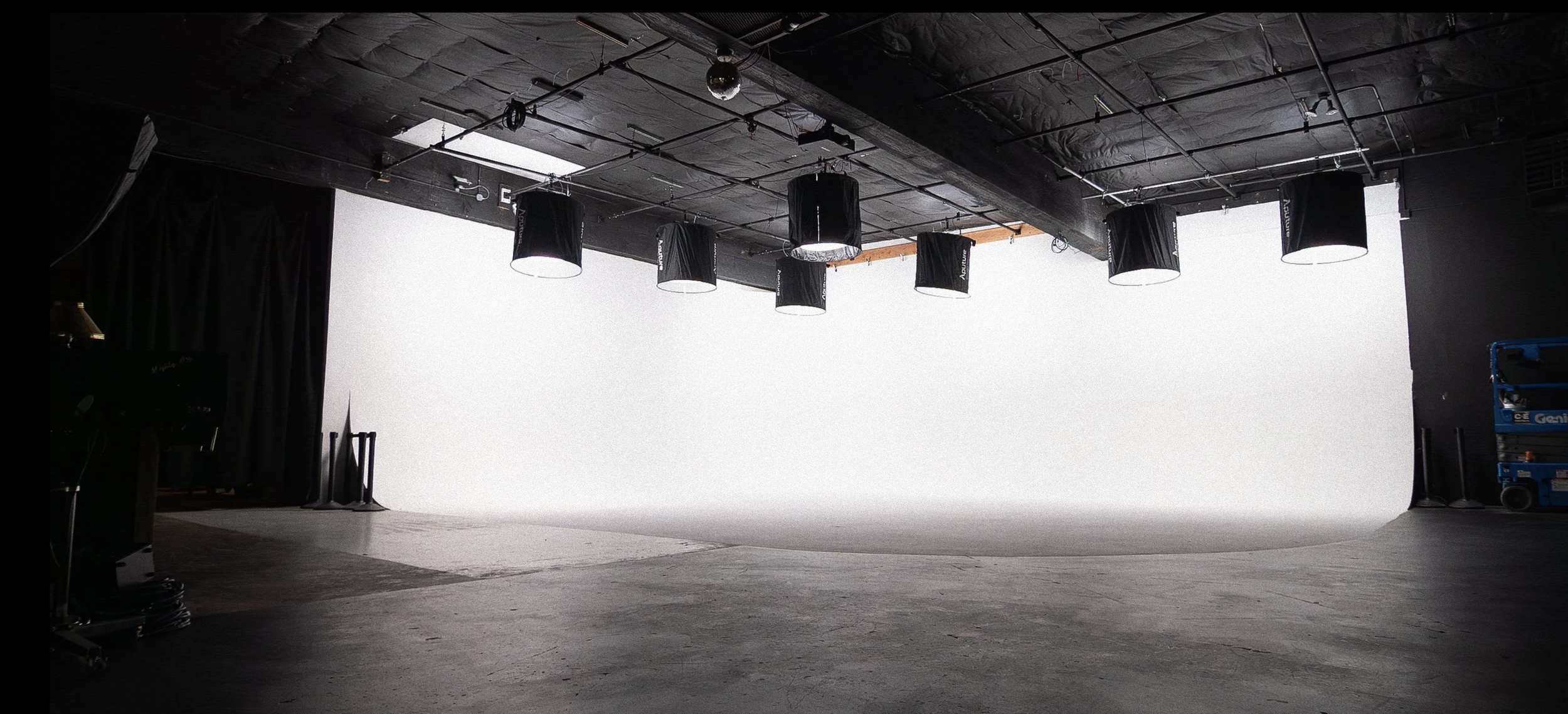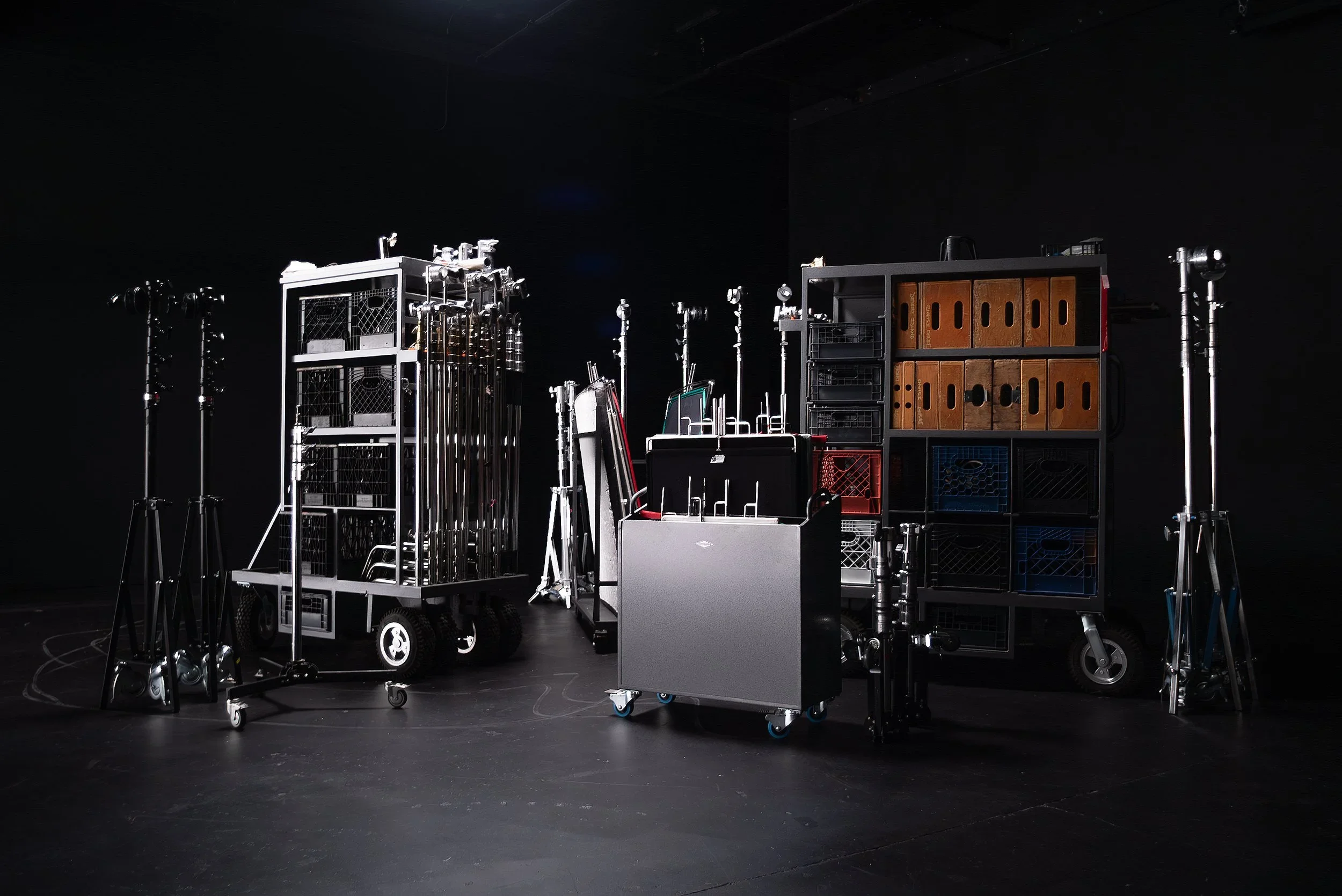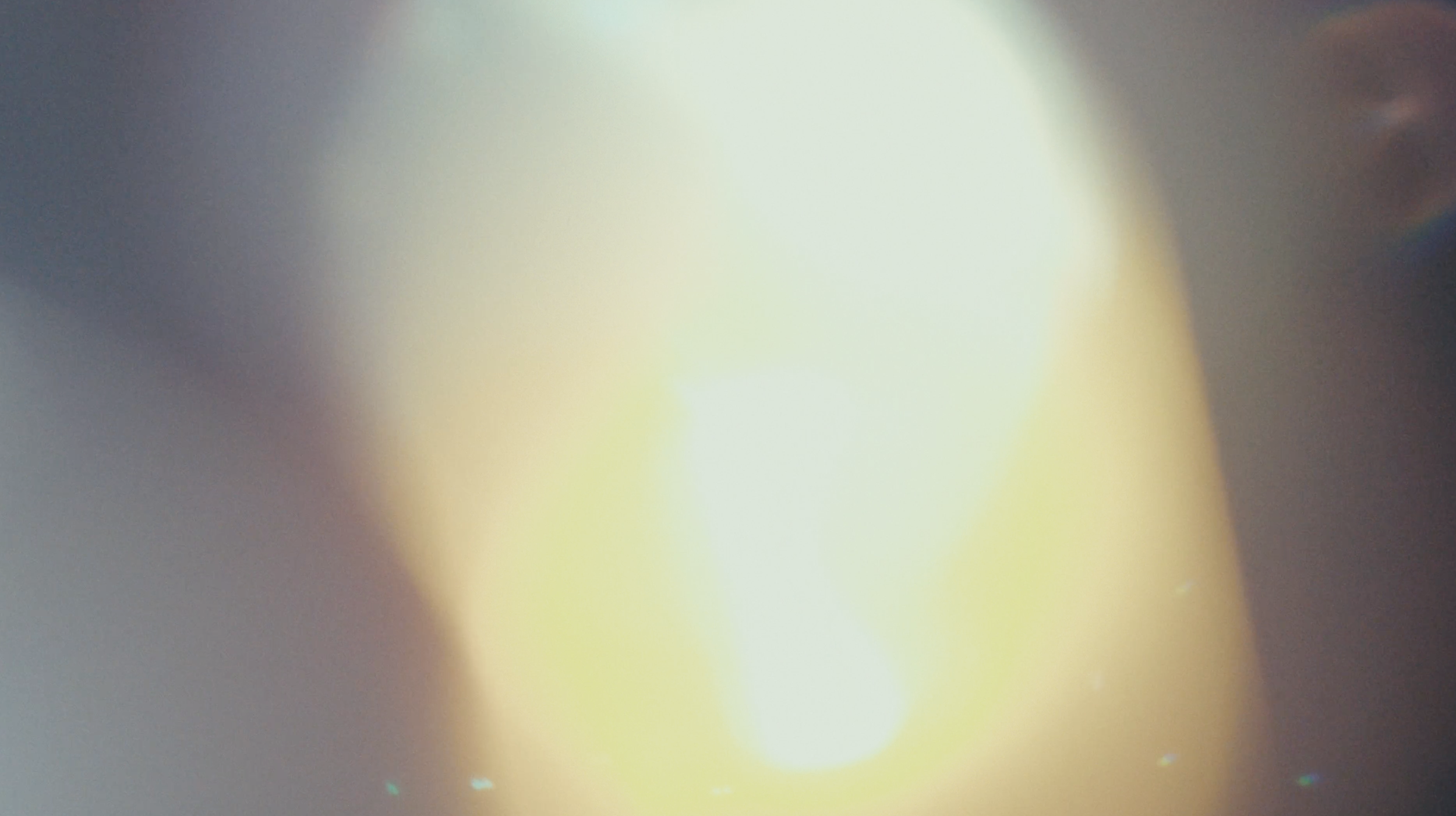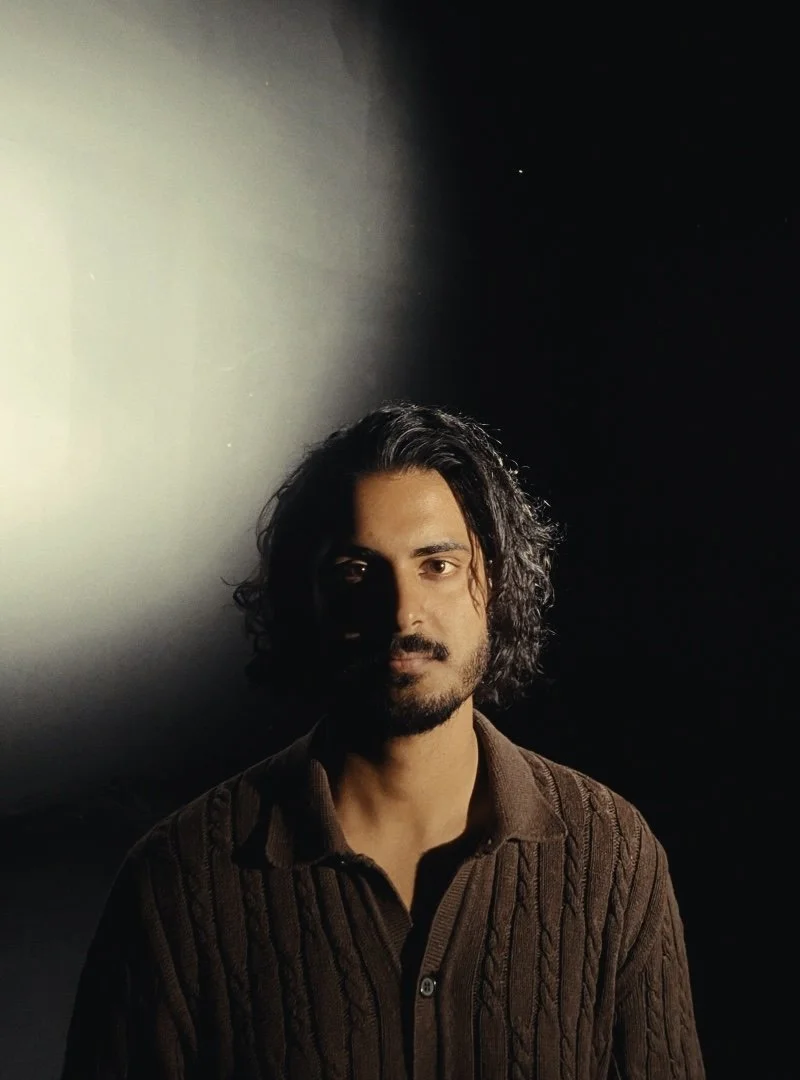MONOCHROME /
MONOCHROME /
NOT EVERYTHING IS BLACK AND WHITE
3.7 million people are about to watch a nationally broadcast interview about a man who lost his ability to perceive color.
UNTIL the interview, and the subject’s life, GO COMPLETELY OFF-THE-RAILS.
STORY /
STORY /
Rod and Cohen are in the middle of the biggest conversation of their lives.
8 million around the world have lost the ability to perceive color. Millions more are wondering—how did Rod, an unknown, get it back?
In the interview of a lifetime, Rod and Cohen—with 3.7 million people tuning in—try to answer a central, essential question: how did Rod go from being monochrome to seeing color?
But the more Rod reveals—about hidden desires, lost dreams, and an unfinished life—the more Cohen starts to lose her composure.
And in order to get chroma—or color—back, Rod has had to resort to something highly illegal: a Polychrome, a device that uses the subconscious to stimulate color.
The more he reveals, the more they both realize—their lives are about to completely change, forever.
DIRECTOR'S NOTE /
DIRECTOR'S NOTE /
I have to be honest with you.
in the beginning, it’s mysterious.
I just had this feeling, this sense—I couldn’t shake it—of a woman appearing like a dreamlike figure, a faraway unreal someone—and in every draft, every little screenplay, she was there.
And then: it started to make sense.
I believe the subconscious reveals itself—in feeling, symbol, metaphor, disguise—and seeing and feeling through Monochrome was like revealing the suppressed self (and collective unconscious) I didn’t even know existed.
It’s why I think it’s so important, so crucial. Filmmakers, artists—they’re interpreters of the subconscious—and they give voice where there is, or can be none, in conscious, waking life.
And Monochrome is a result and a synthesis of that. It is a story that mystifies me, teaches me, evokes me like nothing else does—and in that sense, I believe it can do the same for an audience member, a soul, just like me and you.
I’m excited to share it with you, and talk to you more about the film.
But first—
CHARACTER /
CHARACTER /
ROD
“every time I’d wake up there was a moment when I didn’t remember I’d gone monochrome. It was just a few seconds. But it was seeing her, seeing her in the morning. That was always the first thing that reminded me of what I’d lost.” — ROD
Rod is our protagonist. Growing despondent and developing monochromatism, Rod sees the world as black and white, and he yearns—desperately—for color.
It’s only in his tenth year of monochromatism that something happens—and his life changes forever.
COHEN
Millions of people set to watch.
Ready, polished, hard-hitting—Cohen is the quintessential professional host. Everything is going according to plan—until it doesn’t.
“THIS WHOLE INTERVIEW. EVERYTHING. SHE’S LIKE AN AFTERTHOUGHT. A MIRAGE.” — COHEN
PRODUCER
She’s in the middle of a (very) lucrative interview show. It’s when Cohen loses composure that she realizes: she needs to hold the show together, or it’ll all go wrong.
“EVERYBODY’S FUCKING FINE.” — PRODUCER
UNKNOWN
Flashes. Snippets. Images from a dream.
We don’t know who—or what—she is.
All we know is this: when Rod meets her, everything changes.
“LET ME TELL YOU SOMETHING.” — UNKNOWN
THE FILMMAKING
EMOTION /
EMOTION /
TO ME, THE DIFFERENCE BETWEEN ART AND CREATIVITY IS THAT ART BURNS WITH EMOTION—THE ESSENTIAL HUMAN ELEMENT.
Monochrome is about the emotion of the lives within us we lose—opportunities unlived, romances unhad, fantasies spun to nothing–and it is about how they wither, and simmer, inside us all.
But crucially, it’s also about how what simmers within creates habits, repressed energies, and compensations that warp us, distort us, change and transform—ultimately—who we end up to be.
IMAGE /
IMAGE /
TO ADD: THE IMAGE WILL BE A CONTAINER FOR THE FEELING AND DYNAMISM OF THE WORK ITSELF.
Intense color sequences, full color dreams, chromatic aberration that skews the image, strobe lights.
There’s a kineticism and energy to the film—and a unique visual style—that’s juxtaposed by the interview sequences, which beautifully ground the viewers in a centered, photographic reality.
Fresh, bold, cinematic—and replicating (through post) the look of Full Frame 35mm Kodak Vision 3 film stock—Monochrome is designed, visually, to strike.
SOUND /
SOUND /
AND THEN THERE’S THE SOUND.
In Monochrome, sound design is everything—it’s the second layer that moves and breaths just underneath the surface.
Just like the subconscious.
Working with the narrative, the sound drives the intensity of the story itself—asynchronous breathing, all-consuming music, the nondiagetic swell of the ocean.
And, critically: the film will feature intense, immersive composition—using key, specific (carefully chosen!) instruments from Spitfire Audio—which are meant to envelop the viewer inside the emotional and spiritual journey between Rod and Cohen.
In Monochrome, music and sound isn’t an afterthought—it is an essential driving force of the narrative itself.
WHAT IS THE FILM ABOUT? /
WHAT IS THE FILM ABOUT? /
I believe if we intellectualize about what a film is, it CAN GET us on the wrong TRACK—and reduce the inherent complexity of a work.
And that’s because I believe the best way to think about a work is to put the intellectual mind down—and feel it. And through that feeling—through the experiential lens—that impression gives you a sense of what the film means, subjectively—and very personally—to you.
Monochrome is delicately, densely layered—there are multiple thematic threads that listing a few here gives a different impression than how I, experientially, feel about the film itself.
But from my eyes, the film touches on core, essential human issues.
So here’s three.
Fantasy and reality. Two sides of the same coin.
One, a world—as Kierkegaard said—of possibility. It’s the side that imagines what our life could be. What it wants to be. What stimulates our fantasies—consciously, and unconsciously.
And then reality—the world we have. The world in front of us. The world that presents itself—in our experiences, our loves, our lives. Our limitations.
Rod is torn—through his monochromatic vision—between his real world (the black-and-white world)—and a world beyond.
A world of something more. A world of color.
WE ALL HAVE EXPERIENCES. DESIRES UNMET.
Accomplishment unhad, things we wish we’d done, but didn’t—that simmers in us, burns. It is the reality of being human.
But at some point, the swell of experience—the subconscious itself—starts to burn, and toil.
And then we grasp: for youth, for romantic possibility, for achievements, for aptitudes and abilities we were never afforded. We see a life of possibility, a life of fantasy—and through this, our drive for more, illusion—becomes a breeding ground that warps us, blinds us.
Transforms us.
WE ONLY SEE BEAUTY IN THE THINGS WE WANT.
A woman. A man. A goal. An object. A career.
And we miss—we can’t see—the beauty (and spiritual quality) of the world itself, of the glimmer intrinsic to the fabric of life itself.
We can’t see it—we can’t even perceive it—because we’re cut off from it, like a well that’s run dry.
And as Rod desperately searches for color, we realize—he is not just searching for chromatic experience.
He is searching for happiness, for beauty, for a world of transcendence.
SECRET ADVANTAGES*
*actual photos of Desert Island Studios—the studio where Monochrome will be shot.
SOMETHING THAT’S EASY TO UNDERSTATE:
Monochrome was built (unconsciously, of course!) to be minimalist from the ground-up—which gives it a secret advantage: it’s accessible to make in a way most films aren’t.
The first thing: complete access to Desert Island Studios. I’m a member—and having access to a filmmaking studio adds thousands of dollars in production value, and shaves thousands of dollars off the location budget. And the best part—all the gear is included, cutting the gear budget to zero. This means top of the line cinema equipment, immediately available, at no extra cost: 6k cinema cameras, beautiful (and I mean beautiful) lenses, tripods, sandbags, tungsten lights (yes—tungsten!), bounces, and more.
Even better—nearly every location in the film is accessible, and shootable right now: the Interview Stage (a location in the film) is the right half of Studio A, the Polychrome (another location) is the left half of Studio A (with access to full-color RGB Aperture Space Lights), prism sequences can be shot in Studio A, etc.
PLUS: THERE’S SOMETHING INTRINSIC TO THE FILM AND THE SCRIPT THAT’S EASY TO MISS.
The film says a lot with not-a-lot of actors. It’s built with a minimimalist-maximalist production ethos—using carefully chosen, and precise, elements that’ll ensure maximalist production value you can feel.
Another secret weapon—in addition to the director, and Desert Island’s connections to cast and crew, the director (that’s me) knows how to shrewdly use minimal resources and maximize them to create filmic, full-fledged professional results that look and feel like a Hollywood movie. The concept teasers were filmed on a micro-budget, and shot, edited, compiled, composed, produced, and color-graded by the director himself.
ON THE BIG QUESTION: WHY A FEATURETTE?
A Producer once told me something I strongly believe:
In every film, it’s good (healthy, even) to take a risk.
You make art, and film, to test yourself, challenge yourself. You’re trying to do something different—something that pushes the form.
And yet, growing up—I’d watched Black Mirror, 40 - 50 minute narrative pieces. They had heft. Emotional gravitas. They felt as gravitationally essential as any dramatic work.
And there was a hole—there was little place then, years ago, in our culture for it.
And yet—things are changing. There is Black Mirror—but there is Kung Fury, Wes Anderson’s The Wonderful Story of Henry Sugar—all featurette length. That producer mentioned that in the early 2000’s, 30 - 40 minutes was a no-man’s land. With the internet, with streaming, with the Wild West quality of filmic properties today, and with the natural progression and evolution of cinema on VOD and Youtube—that same producer has told me the market is opening.
With streaming, people find themselves (as me and my partner do) in a nebulous zone—too late to start a movie, yet still wanting to watch something more narratively substantial than a mindless tv show.
It is this instinct—the desire to watch something narratively substantial, with little time—that marketing and distribution is meant to tap into.
And the film’s risk? To add a level of respect, and gravity, to the featurette category, and ride the wave, as content length times are seen as secondary to what matters most: the quality, and pathos, of the story itself.
MARKETING /
MARKETING /
DISTRIBUTION /
DISTRIBUTION /
In a past life, I worked for authors—including Ryan Holiday—and marketing was all they thought about. Growing up in the world and intersection of the internet, the entrepreneurial impulse, and publishing, I read—genuinely—an incredible amount of books on marketing and PR—still remembering Silicon Valley favorites like Traction, and Seth Godin’s Permission Marketing—and having amassed a little popular Substack newsletter with a 1.2k subscriber base, and having launched an old, now-defunct podcast (I moved on!) with our 150,000+ downloads (and roughly 10,000 downloads per episode).
That was the old life—but the principles of marketing, the need to take what you have, discern what’s special about it (positioning), and share it with the world (marketing) has stayed with me. Taking the same creativity I use for the film, and channeling it into the marketing is something I’m very excited to embrace, and tackle.
Good art can change the world—maybe for just two minutes, or a few days, or a lifetime. It can, as Terrence Malick says, “Provoke little changes of heart…those changes which come back to the same thing: living better, loving more.”
Marketing and distribution is the way to get there.
STAGE 1 /
STAGE 1 /
Stage 1: Focus on an International premiere on the film festival circuit, while concurrently selling the film directly to distributors (which our team has direct access to) and securing VOD distribution.
STAGE 2/
STAGE 2/
Stage 2: Shift focus to large, medium, then small festivals around the world with a shot-gun approach.
STAGE 3 /
STAGE 3 /
Stage 3: Distribute the film online, through Youtube, Amazon Prime, and more—both to reach as many people as possible—as well as generate pre-roll (no mid-roll) ad revenue.
AND A fun fact—
Our team is lucky to have strong distribution contacts that can help get the film seen. Distribution contacts include those at Prime Studios—as well as Gravitas Ventures, Freestyle Digital Media, Blood Sweat Honey (another fun fact: they helped with Christopher Nolan’s first film, Following, and The Blair Witch Project!) and more.
What’s great: these distributors have direct partnerships with services like HBO, Netflix, Apple TV, Prime, Peacock, Sling, and more—helping people get in genuine contact with film, and allowing it to touch lives.
DURING THESE 3 STAGES—
We’ll market the film, and push—assertively—using both traditional marketing techniques (trailers, clips, posters, interviews) and non-traditional marketing techniques that utilize a more swing-for-the-fences approach.
On that second note—we'll utilize the exact creativity used to create the film and channel it into campaigns that reflect the movie itself: for example, hosting a Monochrome Photo Booth party, where filmgoers can get their pictures taken (black-and-white, of course!) on a direct replica of the film set.
My favorite approach to marketing is from the book Traction—written by the founder of DuckDuckGo.
I won’t summarize it here, but the basic point is simple—try different things (traction channels), see what works, as well as what doesn’t, and lean into (and double-down) on what does.
This approach honors instinct in marketing—while also engaging spread—and gives us the ability to try things: including cultivating viewership through traditional means (trailers, pitching podcasts, Instagram advertising, behind-the-scenes footage, hiring a publicist) and non-traditional, guerrilla marketing channels (utilizing my film newsletter, Reflections, hosting a Monochrome Photo Booth party, unusual ad campaigns, and more).
Many filmmakers—understandably—shy away from marketing.
To me, marketing is a synthesis of both inner creativity and outer connection, and I’m excited—along with my producers—to use creativity and instinct in order to sell the film, but more relevantly, touch hearts and lives.
WHY THIS FILM NOW?/
WHY THIS FILM NOW?/
I believe (and adore) this film. If you get the chance to see the screenplay, read it—it is the heartbeat of the film.
While many artists make me happy, I’ve been a little sad recently—much of the film I’ve seen really hasn’t touched me, moved me, felt like it was made with depth.
While I can never really say whether or not the film works on that level for you—I made Monochrome with an openness and a generosity of spirit that I hope people can read on the page, and feel on the screen.
It is a film that evokes the key emotional subterranean floor within all of us—and how we grow, we fantasize, and we yearn—and more critically, the film itself is built (from the ground up) to be an experience unlike any other.
I hope you’ll join me. Thank you so much for reading.
About the director
Mohnish Soundararajan is a filmmaker—writer, director, actor, and composer—interested in the beauty and mystery of the human condition, the inner workings of self and society, and the depth of the subconscious. He is currently in development for the film Monochrome—with other projects under wraps. He is a member of Desert Island Studios, a film studio in Portland, Oregon, and leads the film newsletter, Reflections.
Follow on Instagram @realmohnish, or reach out at imohnish@gmail.com. He won’t bite.








